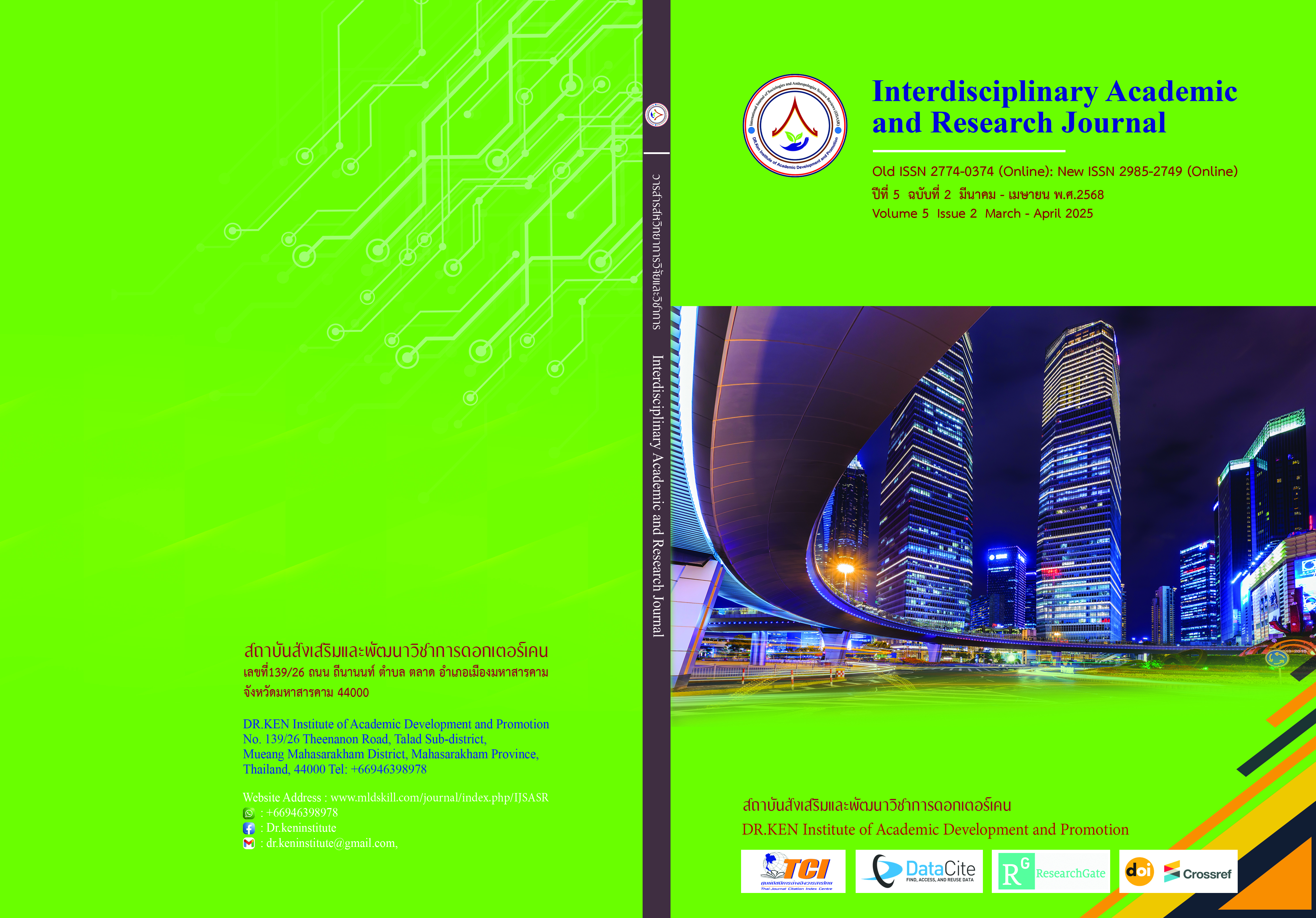Introducing Native Chicken Competitions as a Catalyst for Sustainable Rural Tourism Development
DOI:
https://doi.org/10.60027/iarj.2025.281837Keywords:
Community Development, Sustainable Agriculture, Rural Economy, Tourism DevelopmentAbstract
Background and Aims:
The study aimed to explore the role of native chicken beauty contests as a form of agritourism and its impact on the motivation of farmers to raise native chickens in Isabela province. Agritourism activities, such as these beauty contests, promote local agriculture and cultural traditions while offering economic benefits. By creating a space for competition and pride in local livestock, the contests give farmers a sense of community and recognition. The primary objective of the research was to determine if participation in these events could motivate farmers to invest more in native chicken farming, thus contributing to both the rural economy and the preservation of native chicken breeds. The study focused on farmers participating in the beauty contests between 2018 and 2020.
Methodology:
A descriptive-correlational research design was used to gather data on the participants' characteristics and motivations. The participants were predominantly female farmers aged between 51 and 60 who were married, educated, and involved in farming activities. Most participants raised fewer than 50 native chickens, lacked formal training in native chicken management, and earned less than 10,000 pesos annually from this activity. The study sought to understand the intrinsic and extrinsic factors influencing the farmers’ decisions to raise native chickens based on demographic information and their experiences in beauty contests.
Results:
The results revealed the farmers' strong intrinsic motivations for raising native chickens. Many participants expressed deep affection for native chickens, citing their health benefits and the potential to provide additional income for their families. This internal motivation was driven by the farmers' desire to preserve and care for these native breeds, which they valued for their aesthetic appeal and practical use. On the irrelevant side, participants believed that native chicken farming had the potential to become a robust industry with a stable market. They felt that participating in the beauty contests helped draw attention to the breed’s value, potentially leading to increased market opportunities. Both male and female farmers showed similar levels of intrinsic and extrinsic motivation. However, a deeper analysis indicated that older, married, unemployed, and more educated farmers who raised fewer chickens and earned less were more intrinsically motivated. Extrinsically, older, widowed participants with higher education who raised more chickens, earned a higher income, and were involved in public employment or farming activities exhibited stronger external motivations to continue raising native chickens.
Conclusion:
The study concluded that the native chicken beauty contest, as an agritourism activity, positively influenced the motivation of farmers to raise native chickens. These events fostered intrinsic and extrinsic motivations among a diverse group of farmers. Intrinsically, farmers were motivated by their love for native chickens and the personal satisfaction they gained from raising them. Extrinsically, the contests helped farmers believe in the future potential of native chicken farming, offering hope for industry growth and economic stability. The beauty contests not only celebrated the aesthetic appeal of native chickens but also reinforced the idea that native chicken farming could evolve into a sustainable and profitable venture, further boosting the motivation of farmers across different demographic profiles.
References
Authority, P. S. (2018). Philippine Statistics Authority. Retrieved from Philippine Statistics Authority Web site: https://psa. gov. ph/vegetable-root-crops-main/tomato.
Bagi, F. S., & Reeder, R. J. (2012). Factors affecting farmers’ decisions to enter agritourism. Agricultural and Resource Economics Review, 41(2), 189-199.
Barbieri, C. (2013). Assessing the sustainability of agritourism in the US: A comparison between agritourism and other farm entrepreneurial ventures. Journal of Sustainable Tourism, 21(2), 252-270.
Bogueva, D., Marques, M., Molento, C. F. M., Marinova, D., & Phillips, C. J. (2023). Will the Cows and Chickens Come Home? Perspectives of Australian and Brazilian Beef and Poultry Farmers towards Diversification. Sustainability, 15(16), 12380.
Bondoc, O. L. (2015). Organic livestock farming and breeding toward food security of smallholder farmers in the tropics. 88-pp
Busby, G., & Rendle, S. (2000). The transition from tourism on farms to farm tourism. Tourism Management, 21(6), 635-642.
Cabarles Jr, J. C. (2013). Production potentials of native chickens (Gallus gallus domesticus L.) of Western Visayas, Philippines. Trop. Anim. Health. Prod., 45, 405-410.
Cantú, A.; Aguiñaga, E.; Scheel, C. (2021). Learning from failure and success: The challenges for circular economy implementation in SMEs in an emerging economy. Sustainability, 13, 1529.
da Rocha, T. C.; Olegario, L. S.; de Carvalho, L. M.; Pereira, D. A.; González-Mohino, A.; Ventanas, S.; Madruga, M. S. (2022). Consumer behaviour towards chicken breasts affected with myopathy (Wooden Breast): face-to-face vs. online tests. Int. J. Food Sci. Technol., 57, 5514-5522.
Dizon, M. M., Quilloy, A. J., & Naranja, J. M. (2020). Native chicken production in the Philippines: Status, challenges, and opportunities. Philippine Agricultural Scientist, 103(1), 85-96.
El Benni, N., Finger, R., & Meuwissen, M. P. (2021). Livestock diversity and consumer demand: The role of traditional livestock breeds in food security. Global Food Security, 28, 100499.
Eshun, G.; Segbefia, A. Y.; Acheampong, J. Y. (2014). The Nexus of Agrotourism and Marketing: A case study of Poultry Farms in Kumasi Metropolis, Ghana,
Ghisellini, P., Cialani, C., & Ulgiati, S. (2016). A review on circular economy: the expected transition to a balanced interplay of environmental and economic systems. Journal of Cleaner Production, 114, 11-32.
Lan Phuong, T. N.; Dong Xuan, K. D. T.; Szalay, I. (2015). Traditions and local use of native Vietnamese chicken breeds in sustainable rural farming. Worlds Poult Sci J., 71, 385-396.
Lane, B. (1994). What is rural tourism?. Journal of sustainable tourism, 2(2), 7-21.
Li, Y.; Shi, X.; Phoumin, H. A. (2022). Strategic roadmap for large-scale green hydrogen demonstration and commercialization in China: A review and survey analysis. Int. J. Hydrogen Energy, 47, 24592-24609.
Liangco, G., Alvero, B., & De Jesus, D. (2024). Native chicken competitions as an agritourism innovation in the Philippines: Promoting sustainable rural development. Agriculture and Rural Development Journal, 15(3), 32-45.
Liangco, N. C., Khong-Khai, S., Leelapattana, W., Thongma, W., Guntoro, B., & Thongma, W. (2024). Wings of change: Empowering agro-rural tourism stakeholders through a multifaceted approach for sustainable development. Multidisciplinary Reviews, 7(10), 2024232-2024232.
Liu, A. (2003). Rural tourism development: The effect of local participation. Tourism Management, 24(4), 535-542.
Madalang, M. R., & Abao, A. E. (2018). Scavenging system in native chicken farming: Challenges and prospects. Asian Journal of Agriculture and Development, 7(2), 112-121.
Mukherjee, P. K., Das, B., Bhardwaj, P. K., Tampha, S., Singh, H. K., Chanu, L. D., Sharma, N., & Devi, S. I. (2023). Socio-economic sustainability with circular economy - An alternative approach. Sci. Total Environ. 904, 166630. doi: 10.1016/j.scitotenv.2023.166630.
Peira, G., Longo, D., Pucciarelli, F., & Bonadonna, A. (2021). Rural tourism destination: The Ligurian farmers’ perspective. Sustainability, 13, 13684.
Philip, S., Hunter, C., & Blackstock, K. (2010). A typology for defining agritourism. Tourism Management, 31(6), 754-758.
Piñeiro, V., Arias, J., Dürr, J., Elverdin, P., Ibáñez, A. M., Kinengyere, A., & Torero, M. (2020). A scoping review on incentives for adoption of sustainable agricultural practices and their outcomes. Nature Sustainability, 3(10), 809-820.
Sharpley, R., & Roberts, L. (2004). Rural tourism—10 years on. International Journal of Tourism Research, 6(3), 119-124.
Sharpley, R., & Sharpley, J. (1997). Rural tourism. An introduction (pp. 1-165). International Thomson Business Press.
Skawinska, E.; Zalewski, R. I. (2018). Circular economy as a management model in the paradigm of sustainable development. Management, 22, 217-233.
Tew, C., & Barbieri, C. (2012). The perceived benefits of agritourism: The provider’s perspective. Tourism Management, 33(1), 215-224.
Villano, R. A., Koomson, I., Nengovhela, N. B., Mudau, L., Burrow, H. M., & Bhullar, N. (2023). Relationships between farmer psychological profiles and farm business performance amongst smallholder beef and poultry farmers in South Africa. Agriculture, 13(3), 548.
Downloads
Published
How to Cite
Issue
Section
License
Copyright (c) 2025 Interdisciplinary Academic and Research Journal

This work is licensed under a Creative Commons Attribution-NonCommercial-NoDerivatives 4.0 International License.
Copyright on any article in the Interdisciplinary Academic and Research Journal is retained by the author(s) under the under the Creative Commons Attribution-NonCommercial-NoDerivatives 4.0 International License. Permission to use text, content, images, etc. of publication. Any user to read, download, copy, distribute, print, search, or link to the full texts of articles, crawl them for indexing, pass them as data to software, or use them for any other lawful purpose. But do not use it for commercial use or with the intent to benefit any business.














.png)

